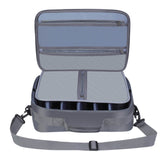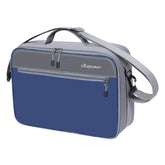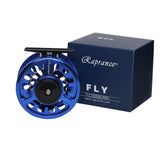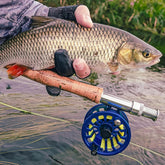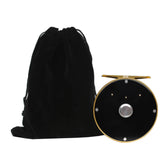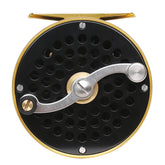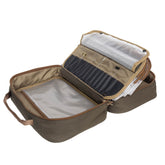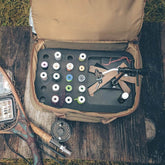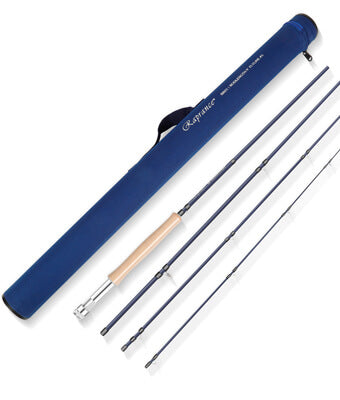Fly Line: Top-Rated Options and Budget-Friendly Choices for Trout Fishing
When it comes to fly fishing, particularly for trout and steelhead, selecting the right line can significantly impact your success on the water. Top-rated switch lines are designed to offer versatility and ease of use, making them an excellent choice for anglers targeting these species. I’ll explore some of the best options available, including budget-friendly alternatives that don’t compromise on quality.

Understanding the differences between switch lines and Skagit lines is essential for optimizing your casting technique and achieving better results. Each line serves distinct purposes based on your fishing style and conditions. I’ll break down how to choose the right switch line for your rod, ensuring you make an informed decision tailored to your specific fishing needs.
Understanding Switch Lines and Fly Fishing Basics

Switch lines play a crucial role in the effectiveness of my fly fishing experience, particularly with switch and spey rods. By understanding their function, the mechanics of casting, and the various types of fly lines, I can enhance my technique and increase my success on the water.
Switch Rods and Their Function
Switch rods serve as a versatile tool in fly fishing, combining elements of both traditional single-hand rods and longer two-hand spey rods. Ranging from 10 to 11.5 feet, they allow me to employ various casting techniques.
These rods excel in situations where space is limited, like riverbanks and brushy areas. With a switch rod, I can perform roll casts and spey casts effectively, making it easier to deliver my fly to the desired spot without needing to backcast.
The Mechanics of Spey Casting
Spey casting is a significant technique I utilize when fishing with switch rods. The method involves using the weight of the fly line and the rod to generate momentum, allowing for smooth casts without backcasting.
The essential components of a spey cast include the D-loop and rotation of the rod. After positioning the line on the water, I create a D-loop by lifting the rod, followed by a forward thrust that propels the line. This technique is particularly useful when fishing for trout in tight spaces, ensuring accuracy and control.
Fly Line Types and Importance
Selecting the right fly line is vital to my success. Switch lines, designed for shorter rolls and overhead casts, are optimized for use with switch rods. They come in various forms, such as floating, sinking, or intermediate, allowing me to adapt my approach based on conditions.
A well-balanced line enhances my casting performance. Lines with a front taper facilitate delicate presentations, which is particularly advantageous while dry fly fishing for trout. The weight of the line should correspond to my rod, ensuring optimal action and control.
Selecting the Perfect Switch Line
Selecting the ideal switch line enhances your trout fishing experience. I consider multiple factors, including line weight and specific brands known for quality. Below, I’ll provide insights into top-rated options, budget-friendly alternatives, and how to choose the right line for your rod.
Top-Rated Switch Lines for Trout Fishing
My go-to choice for trout fishing is the RIO Switch Line. It offers a balanced profile that performs well in various conditions. The line is designed for both casting distance and accuracy.
Another strong contender is the Airflo Skagit Scout, which features a dense core for easy casting and great turnover. Both options are floating lines, allowing for excellent surface presentations.
When selecting a fly line, I prioritize smoothness and durability, ensuring they withstand the rigors of fishing.
Best Budget-Friendly Switch Lines
For those on a budget, the Scientific Anglers Freestyle is an excellent option. It's affordable while maintaining performance. This line allows for versatility in casting and can handle various water conditions.
Another budget-friendly option is the Orvis Clearwater Switch Line. It offers a solid performance without breaking the bank.
Both lines are designed to help beginner anglers gain experience without significant investments.
Choosing the Right Switch Line for Your Rod
When choosing a switch line, I first verify the rod's specifications, particularly line weight. A switch line typically matches the rod rating for optimal performance.
Next, I consider whether I prefer a floating or sinking line based on the fishing conditions. Floating lines work best for surface techniques, while sinking lines excel in deeper waters.
Lastly, I assess the brand reputation and reviews. A trusted brand often signifies quality constructs and materials, making them more suitable for trout fishing. Selecting the right line makes a significant difference in your success on the water.
Comparing Line Types: Switch Lines Versus Skagit Lines
When evaluating switch lines and Skagit lines, it's essential to understand their distinct characteristics and how each affects fishing. Both have unique designs and applications, impacting the angling experience and targeting different species.
Key Differences and Their Impact on Fishing
Switch lines are versatile and designed for both single-hand and two-hand rods. They typically feature a shorter front taper, allowing for better control and easier turnover of flies. This characteristic makes them ideal for fishing in various water conditions.
In contrast, Skagit lines, with their heavier weight and shorter length, excel in delivering larger flies and sinking tips. The Skagit head, often combined with MOW tips, enhances performance in fast, deep water, essential for targeting species like steelhead. The weight distribution in Skagit lines helps anchor the fly quickly, reducing the chances of drag.
When to Choose Skagit Lines
Choosing Skagit lines is advantageous when fishing in challenging conditions. The heavier design aids in casting larger flies, especially in rivers with fast currents or when targeting steelhead and salmon.
I find Skagit lines particularly useful when I need to employ sink tips or when conditions demand a quick sink rate. If fishing in deep pools or turbulent waters, the Skagit lines offer a tactical edge as they facilitate deeper presentations.
In summary, if your fishing requires quick sinking or larger flies, Skagit lines are my go-to option, while switch lines provide flexibility for a broader range of fishing scenarios.
Advanced Techniques and Gear

In my experience, mastering advanced techniques and selecting the right gear can significantly enhance your trout fishing success. Understanding the nuances of different lines and equipment will enable you to make informed choices that suit your fishing style.
Mastering Spey Casts with Different Lines
Mastering the Spey cast is essential for effectively utilizing switch lines. I focus on three primary types of Spey casts: the single Spey, double Spey, and snap T. Each has its distinct application based on water conditions and casting space.
-
Single Spey: Great for quick setups, the single Spey is useful when casting downstream or across. This cast allows for a smooth transition when repositioning.
-
Double Spey: When dealing with wind or needing more power, the double Spey excels. It provides more load on the rod, resulting in greater distance.
-
Snap T: This technique is invaluable in tight spaces. The snap T allows for a quick, efficient cast without the need for excessive backcasting.
Choosing the right running line is crucial, as it directly impacts the cast's efficiency. Lighter running lines offer better performance when paired with shooting heads.
Equipment Recommendations for Enthusiasts
For a successful Spey casting experience, I recommend investing in quality gear. My preferred options include:
-
Spey Rods: A double-handed rod between 11 to 14 feet in length is ideal for most trout fishing scenarios. Look for rods with fast action for improved line speed.
-
Running Line: Choose a floating or intermediate running line depending on your fishing conditions. A thinner line will help in generating distance.
-
Shooting Head: Selecting the right grain weight is crucial; match it to your rod's specifications for optimal performance. A head that is too heavy may hinder your casting ability.
With these tools and techniques, I can confidently navigate various fishing environments, ensuring I'm prepared for whatever the river may present.

